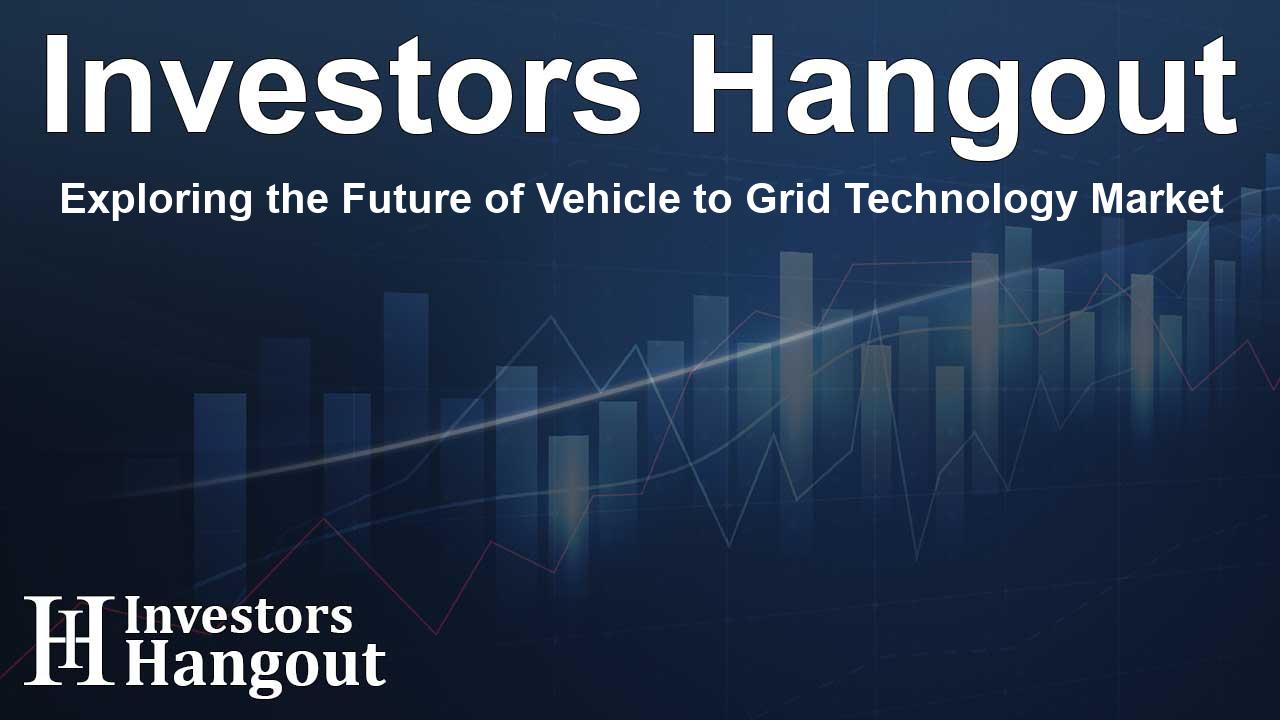Exploring the Future of Vehicle to Grid Technology Market

Understanding Vehicle to Grid (V2G) Technology
Vehicle to Grid (V2G) technology is reshaping the energy landscape by redefining how electric vehicles (EVs) interact with the power grid. This two-way communication enables not only the charging of electric vehicles from the grid but also allows them to supply energy back, effectively positioning EVs as potential sources of energy storage. This development solves significant issues in energy supply and demand, particularly during peak consumption hours or when renewable energy availability is low.
Market Dynamics and Future Predictions
The global V2G technology market, valued at approximately USD 15.85 billion recently, is projected to surge to around USD 251.16 billion in the future, reflecting a compound annual growth rate (CAGR) that highlights growing demand and innovative advancements. The market's expansion is boosted by increasing governmental and organizational policies that favor electric vehicle adoption and smart grid innovations.
Market Drivers
Several factors contribute to the rise of V2G technology.
- Smart Grids Adoption: The rise of smart grids enhances energy management, ensuring more efficient operation of energy systems. Smart grids utilize technology to balance generation and consumption, while V2G systems enhance this by introducing flexible energy resources.
- Renewable Energy Support: With increasing measures to combat climate change, integrating renewable energy sources into the grid is essential. V2G allows EV owners to support renewable energy initiatives, using their vehicles not just as transport, but as energy resources.
Consumer Awareness and Barriers
Even with numerous advantages, consumer awareness about V2G technology remains low. Many EV owners are not familiar with how bidirectional energy transfer works, inhibiting wider acceptance. Furthermore, lack of regulatory clarity in various regions can create uncertainty, making it challenging for businesses to adopt innovative solutions.
Market Growth Areas
Growth in the V2G sector also opens up various opportunities:
Smart Contracts for Energy Trading
Utilizing blockchain technology, smart contracts for energy trading are gaining popularity in the V2G market. This innovation allows for automated transactions, ensuring fair compensation for energy traded back into the grid.
Wireless Charging Systems
Wireless charging technology enhancing V2G capabilities is on the rise, providing a more convenient user experience. These systems eliminate the need for physical connectors, facilitating easier energy transfers and thereby contributing to increased consumer adoption.
Ultra-Fast Charging Stations
The advent of ultra-fast charging stations that support bidirectional features represents a significant transformation within the market. These stations enable quicker charging times while allowing energy return to the grid, catering to the needs of time-sensitive users.
Regional Insights
North America is leading the V2G market by leveraging robust government support, bolstered by regulatory initiatives that incentivize eco-friendly technologies. Additionally, countries in the Asia-Pacific region are set to grow rapidly, fueled by supportive government policies promoting electric vehicles and renewable energy integration.
U.S. Market Achievements
The demand for renewable energy sources is a crucial growth driver for V2G technology in the U.S. Various government programs are encouraging EV owners to engage in V2G initiatives, boosting the overall adoption rate.
Asia-Pacific Market Growth
This region is predicted to experience swift growth due to smart city initiatives, governmental support, and technological advancements. Countries such as China, Japan, and South Korea actively pursue policies that favor electric vehicle adoption.
Future Outlook of the V2G Market
As V2G technology advances, innovative solutions are likely to emerge. Improvements in battery chemistry alongside developments in vehicle infrastructure will enhance the efficacy of bidirectional energy transfer. Additionally, trends towards decentralization of energy systems may render V2G indispensable for future energy strategies.
Frequently Asked Questions
What is Vehicle to Grid (V2G) technology?
V2G is a system that allows electric vehicles to both charge from and supply electricity back to the power grid, enabling efficient energy management.
What factors are driving the growth of the V2G market?
Key drivers include the adoption of smart grids, increasing use of renewable energy, and rising consumer awareness about sustainable energy practices.
Why is consumer awareness important for V2G adoption?
Consumer understanding of the benefits of V2G technology influences adoption rates, as many users may not be aware of how it can lower energy costs or provide incentives.
How is government policy influencing V2G technology?
Supportive government policies, such as tax incentives for EVs, foster an environment conducive to the adoption of V2G technologies.
What future innovations are expected in the V2G market?
Future innovations include smart contract systems for energy trading, wireless charging capabilities, and enhanced battery technology, all aimed at streamlining energy transfers and enhancing efficiency.
About The Author
Contact Thomas Cooper privately here. Or send an email with ATTN: Thomas Cooper as the subject to contact@investorshangout.com.
About Investors Hangout
Investors Hangout is a leading online stock forum for financial discussion and learning, offering a wide range of free tools and resources. It draws in traders of all levels, who exchange market knowledge, investigate trading tactics, and keep an eye on industry developments in real time. Featuring financial articles, stock message boards, quotes, charts, company profiles, and live news updates. Through cooperative learning and a wealth of informational resources, it helps users from novices creating their first portfolios to experts honing their techniques. Join Investors Hangout today: https://investorshangout.com/
The content of this article is based on factual, publicly available information and does not represent legal, financial, or investment advice. Investors Hangout does not offer financial advice, and the author is not a licensed financial advisor. Consult a qualified advisor before making any financial or investment decisions based on this article. This article should not be considered advice to purchase, sell, or hold any securities or other investments. If any of the material provided here is inaccurate, please contact us for corrections.
